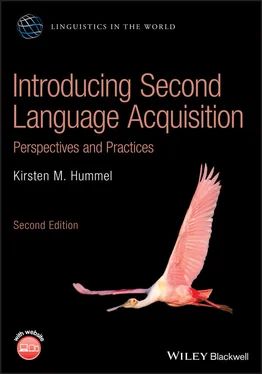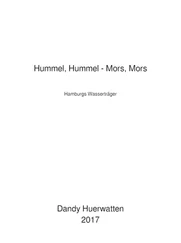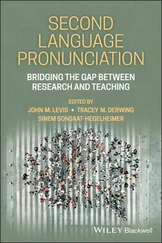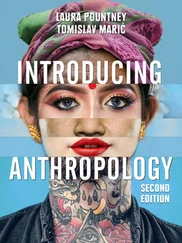behaviorism
Theoretical view proposing that learning principles can explain most behavior, and observable events, rather than mental activity, are the proper objects of study.
While the behaviorist view of language acquisition had considerable impact on the field, it was sharply criticized by researchers, in particular linguists, who, by the late 1950s, had come to very different conclusions about the language acquisition process. Most notably, Chomsky (1959, p. 42) wrote a strongly worded critique of Skinner's book Verbal Behavior in which he argued: “I have been able to find no support whatsoever for the doctrine … that slow and careful shaping of verbal behavior through differential reinforcement is an absolute necessity.” In fact, most research studies have reported that there is little evidence of direct reinforcement of children's utterances. Further, linguists point out that imitation accounts for little syntactic learning and, in any case, is infrequent beyond age two. In addition, children produce forms like “goed” and “wented,” which they do not hear in the environment. Also, importantly, the behaviorist view fails to explain creativity, the fact that children produce novel utterances, like “the paper is soaky” (for “soaking wet,” see Clark 1993) that do not resemble utterances they hear in their environment.
While behaviorists highlighted the environment as the principal agent in bringing about language, a radically different view emerged largely in reaction to that mechanistic behaviorist model. In the Universal Grammar ( UG )view, the environment serves essentially only as a trigger for language development. The UG approach views lan g uage as unique and different from other cognitive systems. It suggests that humans possess what can be considered as a “language faculty,” i.e. a universal set of underlying principles, called UG, which lends its name to this theoretical approach. The existence of UG allows children to form hypotheses about language when they are exposed to a finite set of examples from their environment. In this regard, UG linguists refer to what has been called the “logical problem of language acquisition,” i.e. that without UG, language learning would be impossible because the input data are insufficiently rich to allow acquisition to occur. The inadequacy of the input is also referred to as the “poverty of the stimulus.” In other words, the language that children are exposed to is characterized by abbreviated utterances, interruptions, ungrammatical sequences, etc., such that they could not possibly receive enough information about all the grammatical, possible sentences of the language by exposure alone; something else must be helping children induce the rules of the language, and that something is the proposed “Universal Grammar” they are born with as part of their genetic endowment. This approach is therefore nativist, in emphasizing the biologically inherited aspect of UG.
Universal Grammar (UG)
The innate principles and properties that characterize the grammars of all human languages; also used to describe the theoretical view associated with this concept.
This view also emphasizes that first words “… are the culmination of previous, complex language development … words … develop in parallel to acquisition of the formal system of language, and in part as a result of this” (Lust 2006, p. 263).
The species‐specific nature of language is also emphasized in this approach: language is unique to humans; other species' communication systems are fundamentally different from human language.
Language learning in practice: Human language vs animal communication
There is a long history of interest in examining animal communication systems to see whether they resemble human language and whether certain animal species (such as chimpanzees) can be taught language. Hockett (1960) assembled a list of design features that he considered necessary for a system to be considered a true “language.” In general, animal communication systems lack important features included in that list such as:
“semanticity” (having a fixed relationship between a signal and its meaning);
“arbitrariness” (a signal has no intrinsic relationship with the meaning it conveys, i.e. the relationship is related by convention – for example, the word “sun” is completely arbitrary to represent the object “the sun” in English);
“discreteness” (language consists of discrete, distinct units, such as phonemes, the sound units of language, and words);
“displacement” (ability to refer to things or events that have occurred at another time or place, as in reference to past events); and
“productivity” (a potentially infinite number of different utterances can be produced).
As for attempts to teach language to various species, there has been limited success, whether the studies involve apes (Patterson 1978) or chimps (Savage‐Rumbaugh et al. 1993) learning sign language, or bottlenosed dolphins trained to respond to sound patterns (Herman et al. 1984).
There is considerable evidence for the biological basis for language that the UG approach emphasizes. As pointed out earlier in this chapter, children manifest an early sound perception discrimination ability that appears to fade away if the sound contrasts are not used in the language of the child's environment. We have also noted the developmental similarities in stages and the fact that certain milestones are attained in a similar sequence and at generally similar times (babbling, first word, two‐word sequences, etc.). Such evidence has been used to support the notion that children are indeed “prewired” to acquire language.
On the other hand, others point out that the linguistic view gives too little attention to the role of the environment and the crucial role played by interaction between the child and his or her social network, as discussed in the following section.
2.4.3 L1 interactionist approach
Interactionismand interactionist approaches to explaining L1 acquisition give explicit acknowledgment to the contribution of both innate structures and the role of the environment. In particular, the social interactionist view, which includes proponents such as Berko Gleason, the creator of the Wug test discussed in Section 2.3, argues that while there is substantial evidence that innate structures allow for language acquisition, the role of the environment is more important than acting as a simple trigger for development, as proposed in the linguistic approach. Social interactionists give importance to the interplay between linguistic structures, cognitive abilities, and the social and linguistic environment. Language is viewed as a communicative act and the language environment and the child constitute a dynamic system. Piper (1998, p. 161) sums up this approach in the following way:
interactionism
Theoretical viewpoint about L1 acquisition that recognizes the role of experience and the environment, as well as the contribution of innate capacities.
The question that is of primary interest in language acquisition theory is how children acquire the ability to express their intentions or meanings in language. [Social] interactionists believe that they do so through a process of negotiation with their mothers or principal caregivers. This negotiation occurs partly as a result of mothers treating children's speech, even if it is babbling, as meaningful and intentional.
Interactionists point out that a crucial aspect of the linguistic environment is the speech adaptations to which children are exposed. In many societies, although not all, children learning their native language are exposed to particular linguistic and paralinguistic (prosodic) adaptations; this has been referred to as child‐directed speech ( CDS ), parentese, or caregiver talk. Some of the common characteristics of CDS include shorter utterances, more stress on certain words or syllables, substantial repetition, use of paraphrases, heavy reliance on questions, and marked intonation contrasts. The following dialogue reveals substantial language adaptations by the child's mother. In this dialogue (Bloom, 1973), the mother and child are playing with a doll and toy truck. The child is 19 months old:
Читать дальше












